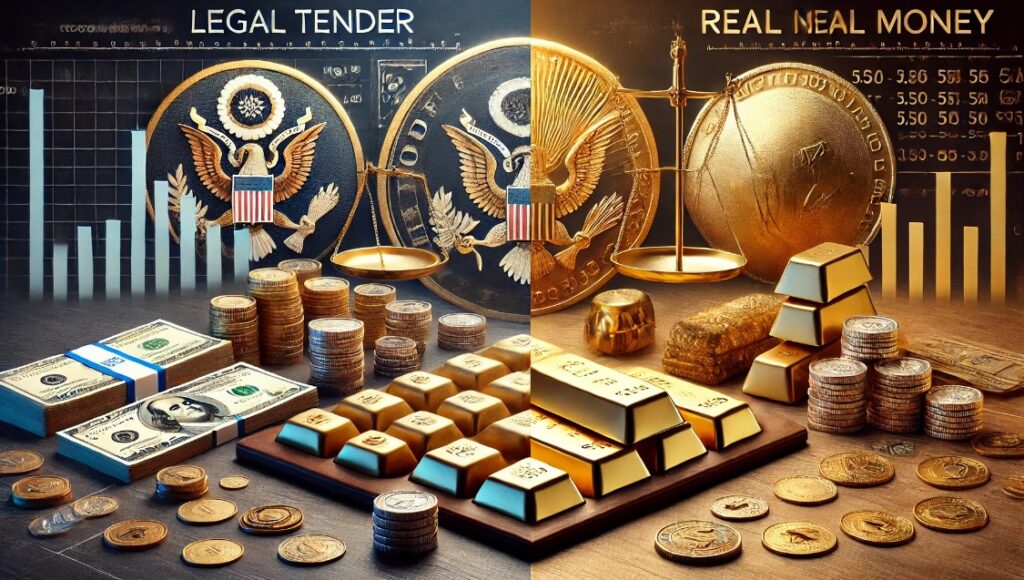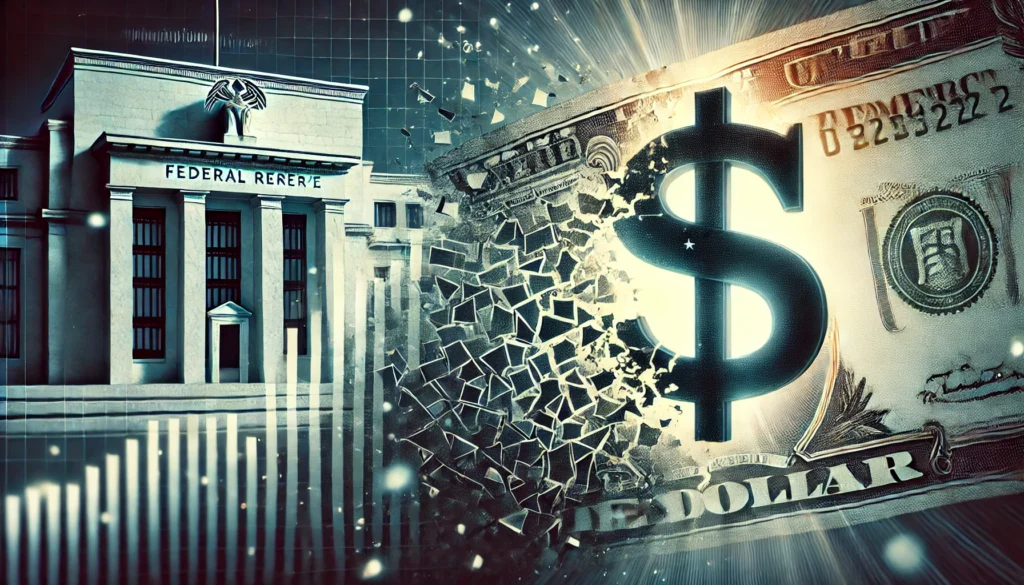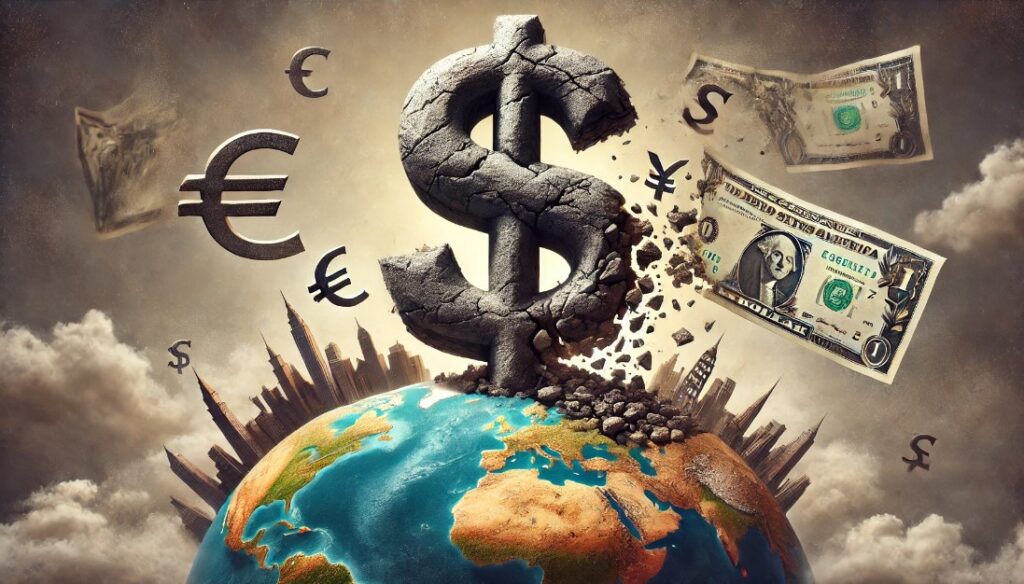What Is Money?
Money is all about trust. It’s a contract, an agreement that the money you hold today will be worth something tomorrow. This idea isn’t new—back in the days of the gold standard, people trusted in the weight and purity of gold or silver coins. Today, in the world of fiat currency, the trust is that paper money or digital deposits will still have value. But at its core, money is a promise between parties. It’s not the paper or the coins themselves that matter, but the trust behind them.
Legal Tender vs. Money: What’s the Difference?
Not all “money” is created equal. Take two pieces of currency: one might be a paper dollar, the other a gold coin. Both could have the same face value, but only one has intrinsic worth. A dollar bill is legal tender, meaning the government requires people to accept it for payments. Gold coins, on the other hand, are valuable on their own, no matter what a government says. Paper money depends on government promises, while commodity-based money—like gold—holds real, lasting value.
The Problem with Fiat Currency
Fiat currency, which comes from the Latin “fiat” meaning “let it be done,” is only as good as the government backing it. The Founding Fathers didn’t trust paper money, believing it was a tool of autocratic control. And they were right. Paper money can be manipulated, leading to inflation and devaluation. When governments overprint, the value of money decreases, and it’s the everyday person who suffers. Today, our money is backed by nothing more than the government’s word—a far cry from the gold-backed currency the Founders envisioned.
The Digital Shift: Money’s Virtual Evolution
We’ve all seen it happen: more and more of our transactions are digital. From credit cards to mobile payments, cash is becoming a relic. In fact, most of the dollars in existence don’t even physically exist—they’re just numbers on a screen. The Federal Reserve’s data shows that electronic dollars outnumber cash by 10 to 1. The world is moving toward a cashless society, but this convenience comes at a cost: it gives governments and corporations more control over our financial lives and more access to our personal data.
Central Bank Digital Currencies: The Next Step in Control
Central Bank Digital Currencies (CBDCs) are not just a new payment method—they’re a new form of government-controlled money. Take China’s “e-yuan,” for example. It looks like any other digital payment, but the Chinese government can track and control every transaction. This type of control is not about convenience; it’s about power. The e-yuan is a tool for surveillance and repression, showing us a glimpse of what could happen if other governments adopt similar currencies.
The Risks of a Cashless Society
Digital payments might be convenient, but they come with a hidden cost: surveillance. Every swipe of your card or tap of your phone gives someone access to your data—your location, what you buy, where you shop. Governments around the world are already using this data for law enforcement and national security purposes. In China, their social credit system can restrict everything from travel to property purchases based on a person’s behavior. As cash disappears, so does our ability to make anonymous transactions, and with it, a crucial element of personal freedom.
When Money Becomes a Weapon
We’ve seen how governments weaponize data, but they can also weaponize money. With a Central Bank Digital Currency (CBDC), governments could easily control how and where people spend their money. Think of it like a digital “no-fly” list for your finances. If you step out of line, your account could be frozen, and you’d be unable to access your own money. This is already happening in China with their e-yuan, and other nations are watching closely. It’s not far-fetched to think a similar system could be implemented elsewhere.
The Inevitable End of Fiat Currency
Fiat currency, backed by nothing but the government’s word, has a long history of failure. Since 1700, over 600 fiat currencies have collapsed. Inflation, overprinting, and bad fiscal policy destroy the value of paper money. We’ve seen this in Argentina, Venezuela, and even here in the U.S. Since leaving the gold standard in 1971, the U.S. dollar has lost 86% of its purchasing power. It’s only a matter of time before the dollar faces the same fate as other failed currencies.
Protecting Yourself: The Case for Precious Metals
So, what’s the solution? The answer lies in assets that don’t rely on trust or government backing: physical precious metals like gold and silver. Unlike digital currencies or paper money, gold and silver have intrinsic value. They’ve been used as money for thousands of years because they hold their worth, even in times of economic collapse. In today’s uncertain financial world, diversifying your savings into physical assets like gold and silver is the best way to protect your wealth.
The Future of Money: Are You Prepared?
The future of money is digital, but that doesn’t mean you have to surrender your financial freedom. By understanding the difference between legal tender and real money, and by investing in assets that hold intrinsic value, you can protect yourself from the coming changes. Don’t wait until the dollar is devalued or a digital currency takes over. Start planning now, diversify your assets, and ensure that your financial future is in your hands—not the government’s.



